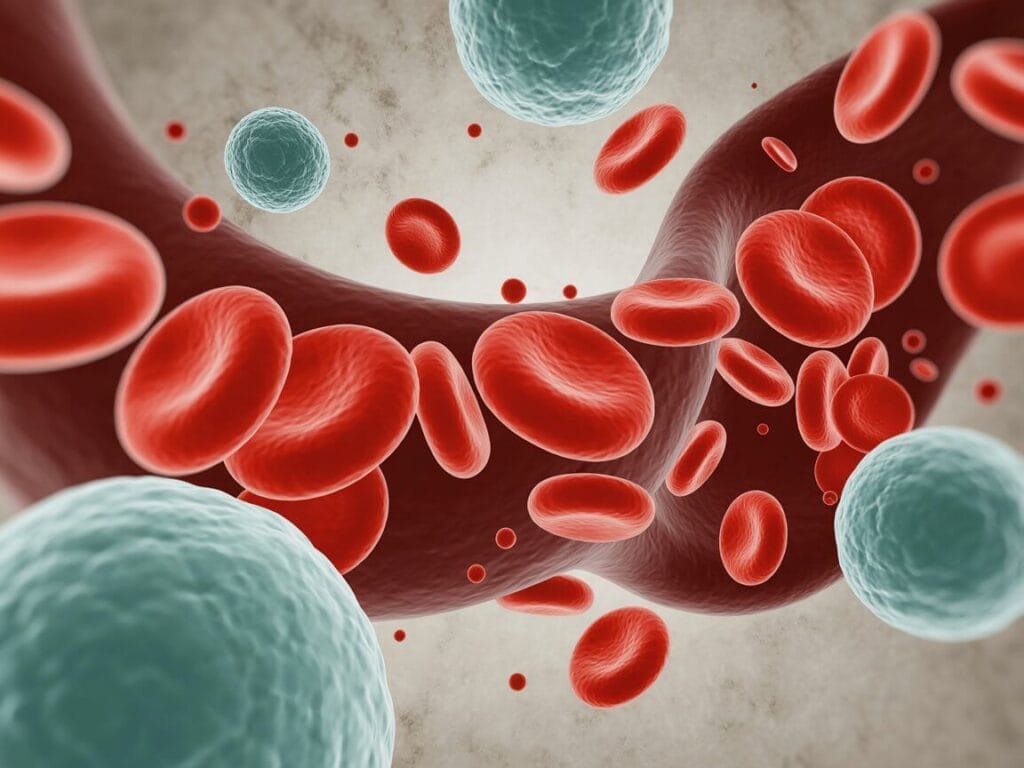Learning how to read lab results can feel overwhelming. That single sheet of paper, filled with abbreviations and numbers, can bring a familiar mix of anxiety and confusion. Your lab report has arrived, but what does it all mean? In my 15 years of clinical practice, I’ve seen that look of uncertainty on countless faces. My goal here is to pull back the curtain. This guide is not about replacing your doctor’s expertise—that relationship is paramount. Instead, this is about empowering you to become a more informed, confident, and active partner in your own healthcare conversations. Understanding the basics of your blood work is a critical step in taking back control of your health journey.
Understanding Your Blood Work: Key Takeaways
- It’s a Snapshot, Not the Whole Movie: A lab result is a single data point. Your doctor interprets it in the context of your overall health, history, and symptoms.
- Focus on Key Panels: The Complete Blood Count (CBC) and Comprehensive Metabolic Panel (CMP) provide a broad overview of your blood cells, electrolytes, and organ function.
- Know Your Inflammation Markers: For those with chronic pain, understanding markers like C-Reactive Protein (CRP) and Erythrocyte Sedimentation Rate (ESR) is crucial for tracking inflammatory activity.
- “Out of Range” Isn’t Always a Crisis: A result slightly outside the standard reference range can be caused by many factors. It’s a signal for a conversation with your doctor, not a reason for immediate panic.
Table of Contents
Prefer to Listen? An Audio Overview
For a conversational deep dive into this topic, press play below for the complete audio discussion with our hosts.
Runtime: 4 minutes
View Full Audio Transcript
Narrator: Welcome to the Dr. Emily Richards audio overview. Today, we’re tackling a topic that brings a mix of hope and anxiety for so many people: the lab report. Dr. Emily, why do you think that single sheet of paper can be so intimidating?
Dr. Emily Richards: That’s a great question. I think it’s because it feels like a secret code about our own bodies. In my practice, I’ve seen how that uncertainty can create a lot of stress. Our goal today is to give you the key to start decoding it, so you can feel empowered, not overwhelmed.
Narrator: So, where does someone even begin when they’re looking at this page of numbers and abbreviations?
Dr. Emily Richards: Before you even look at a single test result, find the “reference range.” This is the most important concept. It’s the range of values considered “normal,” but “normal” can change based on your age, your sex, and even the lab itself. It’s a guideline, not a rigid rule. A result being slightly off isn’t automatically a crisis.
Narrator: That’s really reassuring. Okay, let’s dive into the most common test: the Complete Blood Count, or CBC. What are the key things you look for there?
Dr. Emily Richards: For a CBC, I focus on a few key areas. First, the White Blood Cells, or WBCs. Think of these as your immune system’s army. High numbers can signal infection or inflammation. Second, the Red Blood Cells, or RBCs, and specifically Hemoglobin. These are your oxygen carriers. If they’re low, it often explains the profound fatigue that so many people with chronic conditions experience.
Narrator: You mentioned inflammation. For your patients with chronic pain, are there specific markers they should be aware of?
Dr. Emily Richards: Absolutely. This is critical. Two markers I always discuss are C-Reactive Protein, or CRP, and the Erythrocyte Sedimentation Rate, or ESR. You don’t need to memorize the names, just know that these are your body’s general inflammation signals. When these numbers are high, it tells us there’s an inflammatory process happening somewhere in the body. Seeing those numbers come down can be incredibly validating during a healing journey.
Narrator: Let’s talk about the biggest fear many people have. What if a number is flagged as high or low?
Dr. Emily Richards: My first piece of advice is always: take a breath, and don’t panic. It’s a signal for a conversation, not a final diagnosis. It could be something as simple as being dehydrated or a medication you’re taking. Your doctor’s job is to look at the trend over time and the whole picture, not just one number in isolation.
Narrator: And the other major concern we see in our research… does a routine blood test show cancer?
Dr. Emily Richards: That is such an important and understandable question. The direct answer is no, a routine CBC or metabolic panel is not a cancer screening test. However, it can sometimes provide clues—like severe, unexplained anemia—that might prompt a doctor to investigate further. It’s a piece of the puzzle, but it is not the whole story.
Narrator: So, the ultimate goal here isn’t to self-diagnose, but to be better prepared for that conversation with your doctor.
Dr. Emily Richards: Exactly. This knowledge transforms you from a passive recipient of information into an active, empowered partner in your own healthcare. And that shift in mindset is fundamental to true, lasting wellness.
How to Read Lab Results: Start with the Reference Range
Before we look at specific tests, let’s clarify the most important concept on the page: the reference range (sometimes called “normal range”). This directly addresses the common question, “What are normal readings for blood tests?”
This is the range of values that is considered “normal” for the general population. However, “normal” can vary based on your age, sex, and the specific laboratory that ran the test.
Think of it this way: a reference range is a guideline, not a rigid rule. A result that is slightly high or low may be perfectly normal for you. This is why you should never diagnose yourself based on a single number. Your doctor’s most important job is to interpret these results within the full context of your health.
How Do I Read a Complete Blood Count (CBC) Result?

The CBC is one of the most common blood tests ordered and a frequent source of questions like “How to understand blood count results?” It gives a detailed look at the cells that make up your blood.
I remember a patient with fibromyalgia who had been told for years that her profound fatigue was “just part of the condition.” When we reviewed her CBC together and she saw her low Hemoglobin and Hematocrit numbers, I saw a wave of relief wash over her. She said, “So it’s not just in my head. There’s a reason I feel this exhausted.” That moment was a turning point. For many with conditions like fibromyalgia, understanding these numbers can be the first step in validating the very real physical toll of their condition, a topic we explore in our article on the mind-body connection.
Here is a breakdown of the key components you’ll see on a CBC report.
| Marker (Abbreviation) | What It Measures | Why It Matters for Chronic Health |
|---|---|---|
| White Blood Cell Count (WBC) | Your body’s infection-fighting cells. | High levels can indicate an infection or inflammation. Low levels can signal a weakened immune system. This is a key marker I watch in patients with autoimmune conditions. |
| Red Blood Cell Count (RBC) | Cells that carry oxygen throughout your body. | Low levels (anemia) can cause significant fatigue, a common complaint that overlaps with chronic pain and fibromyalgia. |
| Hemoglobin (Hgb) & Hematocrit (Hct) | Hgb is the protein in RBCs that carries oxygen. Hct is the percentage of your blood made up of RBCs. | These are also key indicators of anemia and your body’s oxygen-carrying capacity. Persistently low energy often correlates with low Hgb/Hct. |
| Platelets (PLT) | Tiny cells that help your blood clot. | Abnormal levels can indicate a bleeding disorder or other underlying conditions. Certain medications can also affect platelet counts. |
| MCV, MCH, MCHC | These are “RBC indices” that describe the size, weight, and concentration of your red blood cells. | These details help your doctor diagnose the *type* of anemia you might have (e.g., iron deficiency vs. B12 deficiency). |
What Are the Most Important Numbers on a Blood Test for Chronic Pain?
While every number has its place, for those of us navigating chronic pain, some of the most important tests are those that measure inflammation. During my own recovery journey, seeing my CRP levels finally start to come down was more validating than any pain scale. It was objective proof that the holistic changes I was making were cooling the fire of inflammation in my body.
- C-Reactive Protein (CRP): This is a protein made by the liver that increases in response to inflammation. A high CRP level is a non-specific but very useful marker that tells us there is inflammatory activity somewhere in the body.
- Erythrocyte Sedimentation Rate (ESR or “Sed Rate”): This test measures how quickly red blood cells settle at the bottom of a test tube. Faster settling can indicate higher levels of inflammation. We discuss how diet can impact these markers in our guide to anti-inflammatory foods.
Other common tests you might see on a Comprehensive Metabolic Panel (CMP) include:
- Glucose: Your blood sugar level. Important for monitoring pre-diabetes and diabetes, which can influence pain and inflammation.
- Electrolytes (Sodium, Potassium, etc.): Minerals that are vital for nerve and muscle function.
- Kidney & Liver Markers (e.g., Creatinine, ALT, AST): These check the function of your body’s critical filtering organs.
What Do Alarming Blood Test Results Look Like?
What if a result is slightly out of range?
This is incredibly common. A single marker being slightly high or low is often not a cause for alarm. It could be due to what you ate, your hydration level, or a minor, temporary stressor on your body. In my practice, I always emphasize looking at the trend over time and the complete picture of all your results.
What indicates an infection in a blood test?
A high White Blood Cell (WBC) count is the classic sign. More specifically, your doctor will look at the “WBC Differential,” which breaks down the types of white blood cells. A high level of neutrophils, for example, often points toward a bacterial infection.
Does routine blood work detect cancer?
This is a common and understandable fear. The answer is nuanced. Routine blood work like a CBC or CMP is not a definitive cancer screening test for most cancers. However, it can sometimes reveal clues that something is wrong. For example, severe, unexplained anemia or extremely abnormal white blood cell counts might prompt your doctor to investigate further. Please do not rely on a “normal” blood test to rule out cancer, and always discuss specific cancer screening tests (like mammograms or colonoscopies) with your doctor.
How Should I Discuss My Lab Results with My Doctor?
Knowledge is only powerful when you use it. Being prepared for your appointment is the best way to ensure you are heard and understood. This builds directly on the principles we cover in our guide on how to talk to your doctor about chronic pain.
Here are some questions to bring to your next appointment to help you partner with your doctor:
- “Could you walk me through the most important results from this test?”
- “I noticed [specific result] was flagged as high/low. What does that mean in the context of my health?”
- “Are there any trends you’re seeing in my lab work over time?”
- “How do these results relate to the symptoms I’ve been experiencing, like fatigue or pain?”
- “Based on these results, are there any lifestyle or diet changes you would suggest we consider?”
- “When should we re-check these levels?”
Your Top Questions About Lab Results Answered
What are the most important numbers on a blood test?
While it depends on your specific health concerns, the most important numbers for a general overview often come from the Complete Blood Count (CBC) and Comprehensive Metabolic Panel (CMP). For those with chronic pain, inflammatory markers like C-Reactive Protein (CRP) and Erythrocyte Sedimentation Rate (ESR) are also critically important to monitor.
What indicates an infection in a blood test?
The primary indicator of an infection is a high White Blood Cell (WBC) count. Your doctor will also look at the “WBC Differential,” where a high level of a specific type of cell, called neutrophils, often points toward a bacterial infection.
What level of RBC is concerning?
A concerning Red Blood Cell (RBC) count is one that falls significantly outside the lab’s reference range. A low RBC count, known as anemia, is often concerning as it can cause significant fatigue and weakness. A high RBC count (polycythemia) is less common but also requires investigation. It’s crucial that your doctor interprets any abnormal level in the context of your overall health.
Can routine blood work detect cancer?
Routine blood work like a CBC or CMP is not a definitive cancer screening test. However, it can sometimes reveal clues, such as severe unexplained anemia or extremely abnormal white blood cell counts, that may prompt your doctor to investigate further. Always discuss appropriate cancer screenings with your doctor.
Conclusion: From Confusion to Confidence
Your lab report is a valuable piece of your health puzzle. By learning to read the basics, you transform it from an intimidating document into a tool for a more productive and collaborative conversation with your healthcare team. It is a fundamental act of self-advocacy on your path to wellness, and a step I know from experience is essential to true healing.
Watch the Full Video Guide
For a complete visual breakdown of this topic, including animated infographics and detailed explanations, watch our full, in-depth video guide below.
Disclaimer: The content provided by Dr. Emily Richards is for informational and educational purposes only and does not constitute medical advice. Always consult with your healthcare provider for any health concerns or before making any changes to your treatment plan.
References
View Full List of Scientific References
- Lab Tests Online. (2024). American Association for Clinical Chemistry (AACC). Retrieved from https://www.labtestsonline.org
- Mayo Clinic. (2023). Complete blood count (CBC). Mayo Foundation for Medical Education and Research. Retrieved from https://www.mayoclinic.org/tests-procedures/complete-blood-count/about/pac-20384919
- MedlinePlus [Internet]. Bethesda (MD): National Library of Medicine (US); [updated 2024 Aug 29; cited 2025 Aug 29]; How to Understand Your Lab Results; [about 5 p.]. Available from: https://medlineplus.gov/lab-tests/how-to-understand-your-lab-results/
- MedlinePlus [Internet]. Bethesda (MD): National Library of Medicine (US); [updated 2024 Aug 29; cited 2025 Aug 29]; Complete blood count (CBC); [about 5 p.]. Available from: https://www.mayoclinic.org/tests-procedures/complete-blood-count/about/pac-20384919
- Cleveland Clinic. Leukocytosis (High White Blood Cell Count): Causes & Symptoms. Updated August 29, 2024. Accessed August 29, 2025. https://my.clevelandclinic.org/health/diseases/17704-high-white-blood-cell-count
- MedlinePlus [Internet]. Bethesda (MD): National Library of Medicine (US); [updated 2024 Aug 29; cited 2025 Aug 29]; C-Reactive Protein (CRP) Test; [about 5 p.]. Available from: https://medlineplus.gov/lab-tests/c-reactive-protein-crp-test
- MedlinePlus [Internet]. Bethesda (MD): National Library of Medicine (US); [updated 2024 Aug 29; cited 2025 Aug 29]; Erythrocyte Sedimentation Rate (ESR); [about 5 p.]. Available from: https://medlineplus.gov/lab-tests/erythrocyte-sedimentation-rate-esr
- MedlinePlus [Internet]. Bethesda (MD): National Library of Medicine (US); [updated 2024 Aug 29; cited 2025 Aug 29]; Comprehensive Metabolic Panel (CMP); [about 5 p.]. Available from: https://medlineplus.gov/lab-tests/comprehensive-metabolic-panel-cmp
- Mayo Clinic. Cancer blood tests: Lab tests used in cancer diagnosis. Mayo Foundation for Medical Education and Research. Updated August 29, 2024. Accessed August 29, 2025. https://www.mayoclinic.org/diseases-conditions/cancer/in-depth/cancer-diagnosis/art-20046459

Start Healing from the Inside Out
Download my FREE 7-Day Anti-Inflammatory Kickstart Guide. It’s a simple, doctor-designed plan to help you reduce inflammation and soothe pain, one meal at a time.



